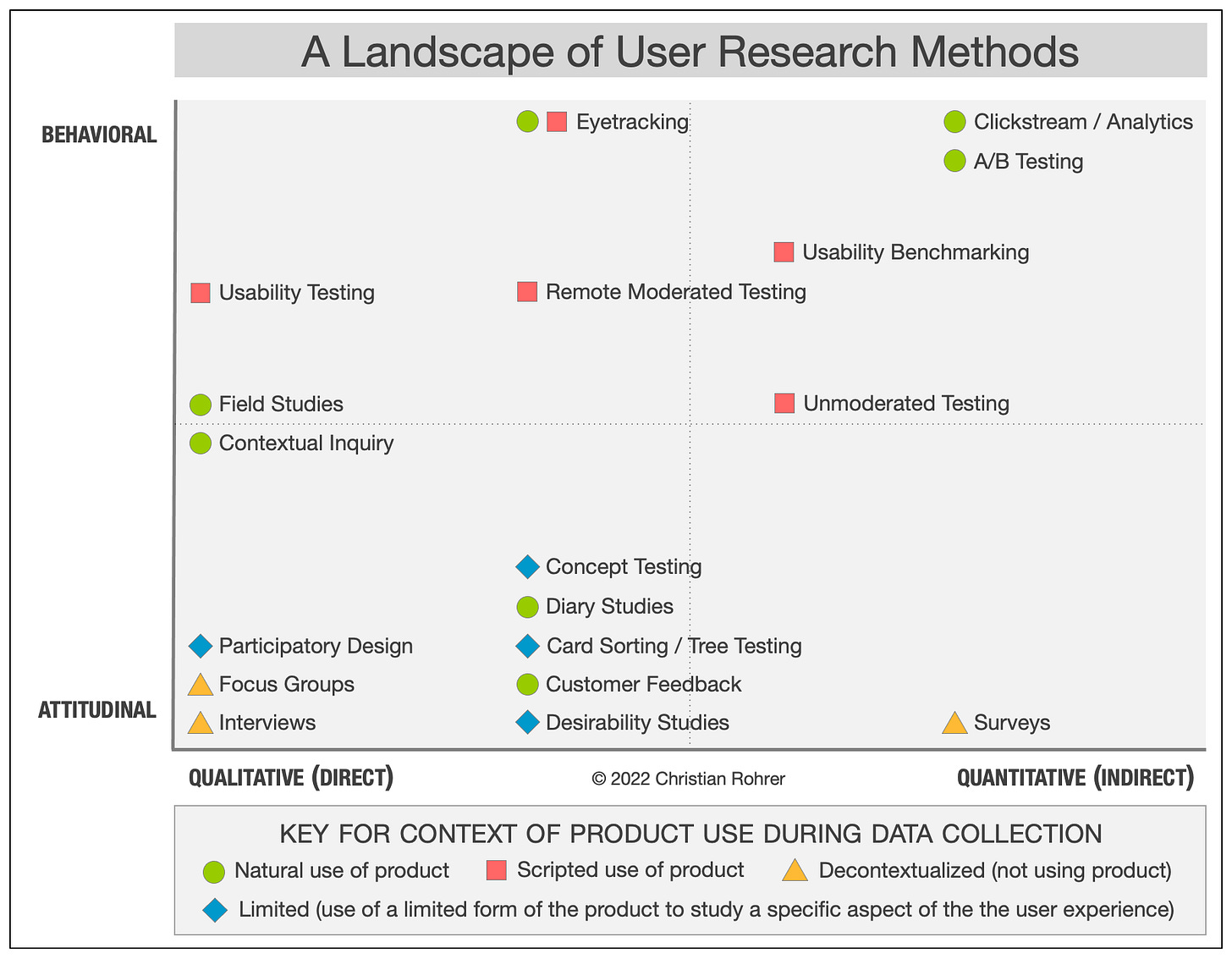Maximising product success through User Research
User research is a super important tool for a product team to create great products. In my 13+ years of experience, I've used different research types to find out what users need and what opportunities exist.
The goal is to reduce the risk of a problem not being important or a solution being wrong after we launch a product. It helps us increase the chances of getting things right when launching a product.
Formative, Exploratory Research: Formative or exploratory research is a qualitative research method focused on gaining insights, understanding user behaviours, and generating ideas in the early stages of a project to inform and shape further development.
Goal: Find new opportunities and problems we might be unaware of.
Outcome: Discover a new category or feature to improve our product/services.
Time to insight: Best done 3-6 months before you use this insight to build products.
Prototype Usability Testing: Usability testing is a method of evaluating a product (real) or prototype by observing real users and asking them questions as they interact.
Goal: Identify usability issues in user experience. It's crucial to do this before a major redesign exercise.
Participants: Test with different user types (novice, power users, in-between).
Time to insight: A few weeks before development starts for the project.
User Interviews (Individual or Focus Groups): A user interview is a qualitative research method where a researcher engages in a conversation with an individual user or a group of users to gather insights into their experiences, needs, preferences, and behaviours related to a product or topic.
Goal: Identify niche problems affecting an area of the product or a cohort of users.
Participants: Preferably done with individual users with a small, homogeneous group. Best for niche topics. e.g., payment-related problems in an e-commerce website or navigation problems in a driver app for food delivery.
Time to insight: This can be done in 2-4 weeks, depending on the speed of recruiting users.
Field Research: Field research is a qualitative research method that involves gathering data firsthand by directly observing and interacting with people, environments, or phenomena in their natural settings.
Goal: My preferred way of understanding user problems for internal and B2B products. Users may not articulate issues well, so observe them using the product and create a friction log. High return on investment based on my experience.
Participants: Internal users, Alpha/Reference Users (Early and enthusiastic users for your product who are willing to test and give feedback)
Time to insight: Quick (Under 2 weeks) with internal users. We may need some lead time for external users.
Quantitative Surveys: A quantitative survey is a research method that involves collecting numerical data from a large sample of participants to analyze and draw statistical conclusions.
Goal: Great for getting a list of problems, opportunities, and feedback from diverse users.
Participants: This can be done with many users simultaneously - new, existing, and prospective users across different cohorts.
Time to insight: It takes time to prepare questions (2-3 weeks), but results quickly come in. It might take 4-6 weeks overall to compile insights.
Understanding why behind A/B experiment results: This is done by typically interviewing a few users to understand the why behind their actions.
Goal: Determining the "why" behind experiment outcomes is crucial. This helps conclude an experiment and take the learnings forward.
Participants: Usually, your existing users were part of the experiment cohort.
Time to insight: This can be done in a couple of days to a few weeks.
Some Best Practices:
Product trio (PM, Design, Engg lead) should actively participate in research. Don’t just delegate it to research teams with a service mindset.
Reward users with coupons or incentives for their time during the research. If possible, also send them a personalized thank you email.
Have alpha/reference users, especially for internal and B2B products. Work closely with them to understand how the evolving product is helping them over a period of time.
While there are many more ways to do user research, the abovementioned ways are among the most important ones in the product team’s arsenal.





